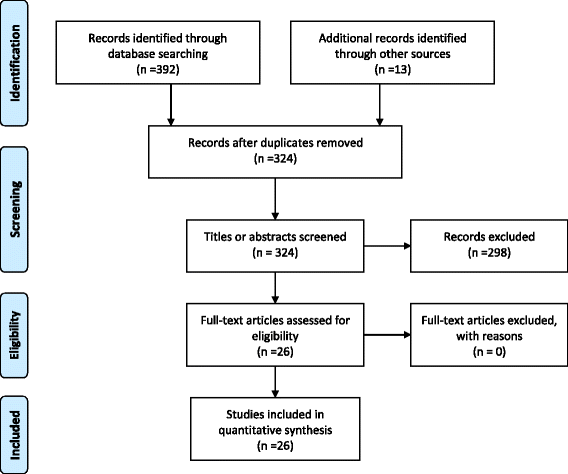A review of characteristics and outcomes of Australia's undergraduate medical education rural immersion programs
- PMID: 29386024
- PMCID: PMC5793366
- DOI: 10.1186/s12960-018-0271-2
A review of characteristics and outcomes of Australia's undergraduate medical education rural immersion programs
Abstract
Background: A key strategy for increasing the supply of rural doctors is rurally located medical education. In 2000, Australia introduced a national policy to increase rural immersion for undergraduate medical students. This study aims to describe the characteristics and outcomes of the rural immersion programs that were implemented in Australian medical schools.
Methods: Information about 19 immersion programs was sourced in 2016 via the grey and published literature. A scoping review of the published peer-reviewed studies via Ovid MEDLINE and Informit (2000-2016) and direct journal searching included studies that focused on outcomes of undergraduate rural immersion in Australian medical schools from 2000 to 2016.
Results: Programs varied widely by selection criteria and program design, offering between 1- and 6-year immersion. Based on 26 studies from 10 medical schools, rural immersion was positively associated with rural practice in the first postgraduate year (internship) and early career (first 10 years post-qualifying). Having a rural background increased the effects of rural immersion. Evidence suggested that longer duration of immersion also increases the uptake of rural work, including by metropolitan-background students, though overall there was limited evidence about the influence of different program designs. Most evidence was based on relatively weak, predominantly cross-sectional research designs and single-institution studies. Many had flaws including small sample sizes, studying internship outcomes only, inadequately controlling for confounding variables, not using metropolitan-trained controls and providing limited justification as to the postgraduate stage at which rural practice outcomes were measured.
Conclusions: Australia's immersion programs are moderately associated with an increased rural supply of early career doctors although metropolitan-trained students contribute equal numbers to overall rural workforce capacity. More research is needed about the influence of student interest in rural practice and the duration and setting of immersion on rural work uptake and working more remotely. Research needs to be more nationally balanced and scaled-up to inform national policy development. Critically, the quality of research could be strengthened through longer-term follow-up studies, adjusting for known confounders, accounting for postgraduate stages and using appropriate controls to test the relative effects of student characteristics and program designs.
Keywords: Doctors; Medical school; Rural immersion; Rural practice; Rural program; Rural supply; University.
Conflict of interest statement
Authors’ information
Not applicable
Ethics approval and consent to participate
Not applicable
Consent for publication
Not applicable
Competing interests
The authors declare that they have no competing interests.
Publisher’s Note
Springer Nature remains neutral with regard to jurisdictional claims in published maps and institutional affiliations.
Similar articles
-
Initial evaluation of rural programs at the Australian National University: understanding the effects of rural programs on intentions for rural and remote medical practice.Rural Remote Health. 2011;11(2):1602. Epub 2011 May 13. Rural Remote Health. 2011. PMID: 21568620
-
Positive impacts on rural and regional workforce from the first seven cohorts of James Cook University medical graduates.Rural Remote Health. 2014;14:2657. Epub 2014 Mar 20. Rural Remote Health. 2014. PMID: 24645878
-
Outcomes of Australian rural clinical schools: a decade of success building the rural medical workforce through the education and training continuum.Rural Remote Health. 2015 Jul-Sep;15(3):2991. Epub 2015 Sep 16. Rural Remote Health. 2015. PMID: 26377746
-
Reviewing reliance on overseas-trained doctors in rural Australia and planning for self-sufficiency: applying 10 years' MABEL evidence.Hum Resour Health. 2019 Jan 22;17(1):8. doi: 10.1186/s12960-018-0339-z. Hum Resour Health. 2019. PMID: 30670027 Free PMC article. Review.
-
A scoping review of the association between rural medical education and rural practice location.Hum Resour Health. 2015 May 6;13:27. doi: 10.1186/s12960-015-0017-3. Hum Resour Health. 2015. PMID: 25943870 Free PMC article.
Cited by
-
Factors predicting rural location employment intent and choice among medical students and graduates.Korean J Med Educ. 2022 Dec;34(4):273-280. doi: 10.3946/kjme.2022.236. Epub 2022 Nov 29. Korean J Med Educ. 2022. PMID: 36464898 Free PMC article.
-
Rural doctor quota students in Germany - who are they? Data on first year students from two cohorts in the federal state of Saxony.Med Educ Online. 2025 Dec;30(1):2497325. doi: 10.1080/10872981.2025.2497325. Epub 2025 May 6. Med Educ Online. 2025. PMID: 40329552 Free PMC article.
-
Social network analysis of rural medical networks after medical school immersion in a rural clinical school.BMC Health Serv Res. 2019 May 14;19(1):305. doi: 10.1186/s12913-019-4132-z. BMC Health Serv Res. 2019. PMID: 31088454 Free PMC article.
-
Effects of a regional-rural immersion program in Northland, New Zealand, on returning to work in that region.Aust J Rural Health. 2022 Oct;30(5):666-675. doi: 10.1111/ajr.12876. Epub 2022 May 14. Aust J Rural Health. 2022. PMID: 35567770 Free PMC article.
-
The impact of rural outreach programs on medical students' future rural intentions and working locations: a systematic review.BMC Med Educ. 2018 Aug 14;18(1):196. doi: 10.1186/s12909-018-1287-y. BMC Med Educ. 2018. PMID: 30107795 Free PMC article.
References
-
- United Nations. Sustainable development goals: 17 goals to transform our world. Geneva: UN, 2016. http://www.un.org/sustainabledevelopment/sustainable-development-goals/ (accessed 26 October 2017).
Publication types
MeSH terms
LinkOut - more resources
Full Text Sources
Other Literature Sources
Medical


